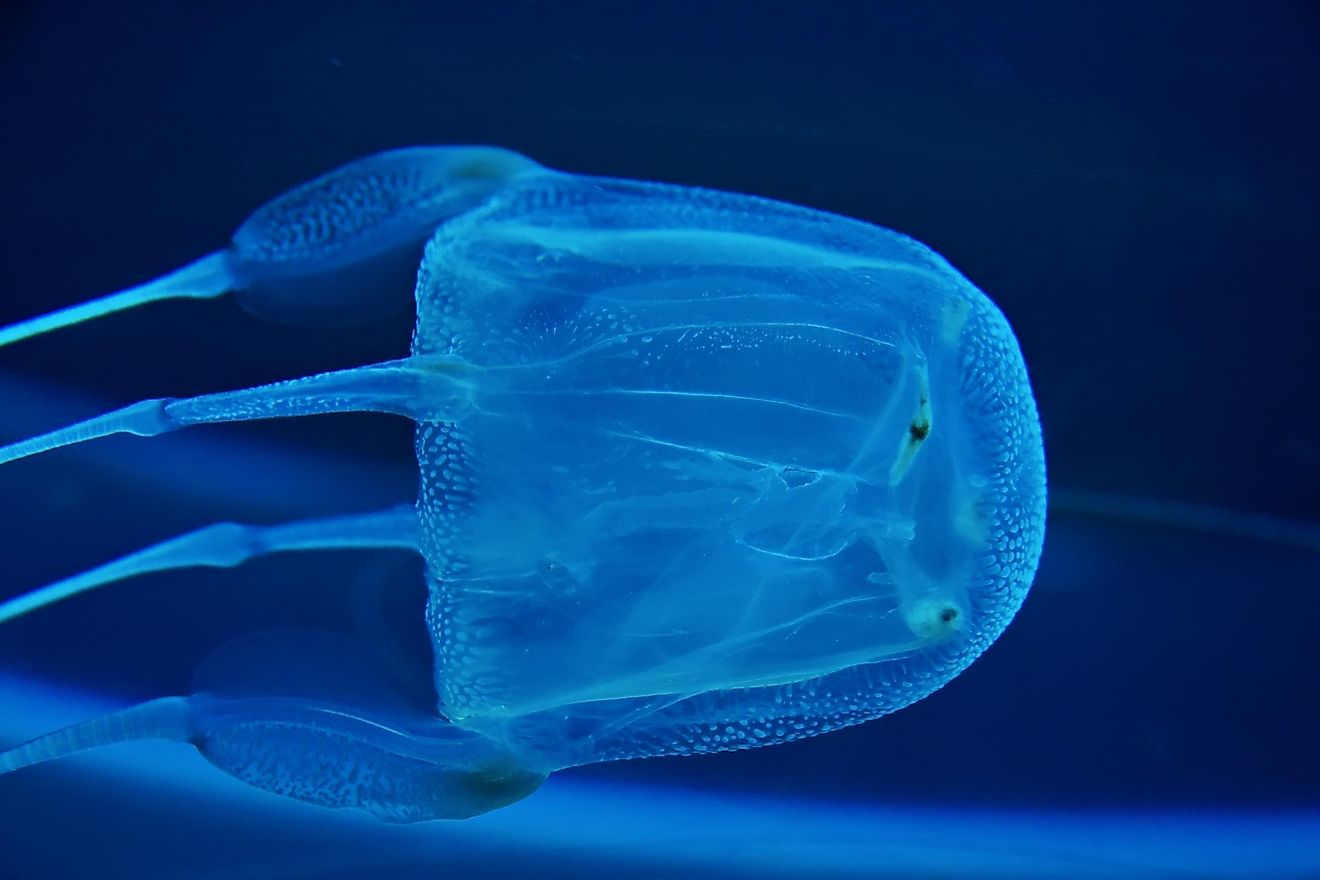The Deadly Box Jellyfish Off Australia's Coast

- The Australian box jellyfish is considered the venomous marine animal.
- Box jellyfish are found in warm coastal waters around the world.
- Big box jellyfish can swim faster than some Olympic swimmers.
The world is filled with a staggering variety of wildlife, with animals ranging from large to small, colorful to dull, and located anywhere from the sea to the land. The ocean is one such hub of vibrant ecological activity. One of the more infamous of these sea animals is the box jellyfish which looks as cute and squishy as any jellyfish but its small body carries a terrifying amount of poison and force.
What is the box jellyfish?
The box jellyfish looks like any other jellyfish, though they are specifically named as such because of their unique box-like body shape. What makes this creature stand out is the sheer venomous force contained in its skin. The tentacles of its body are covered in biological death devices known as nematocysts, which are essentially just small spikes loaded with poison. What is important to note that of the 50 or so species of box jellyfish, which are also sometimes called sea wasps, only a select amount of them have enough venom to be lethal to humans. Still, it's probably best to stay clear.
Another characteristic that sets the box jellyfish apart from others of its kind is the fact that it can swim, approaching a significant speed of four knots, which is about 4.60 miles per hour. This is considerably quicker than most humans who move at approximately two miles per hour in the water. Even Olympic swimmers like Michael Phelps only hit a speed of 5.5 miles per hour at their peak, inching in just a bit faster than these small jellyfish.
Another differentiator that sets these sea animals apart is the fact that they can see, with clusters of eyes that are located on each side of the box. These eyes can often be shockingly complex, with features like a lens and cornea, a retina, and even an iris that contracts in bright light. This combination of high speed and multifaceted vision leads some researchers to believe that box jellyfish chase and hunt down their prey, which consists primarily of shrimp and other small fish.
The most venomous of the box jellyfish is the Australian breed, which goes by the formal name of Chironex fleckeri. This animal is considered to be the most venomous of the marine species and is also one of the largest of the box jellyfish, with a size that can reach up to one foot in diameter and with tentacles that extend out another staggering 10 feet.
What happens if you get stung?
Anyone unfortunate to cross paths with a box jellyfish is in potential danger of being stung. Those unlucky enough to get stung by a particularly poisonous breed of box jellyfish are in danger of experiencing cardiac arrest, paralysis, and even death, all within just a few minutes of being stung. The venom is so potent that it can kill you within two minutes if more than two meters of tentacle touches the skin. Even a glancing touch can result in an excruciatingly painful sting. Symptoms of a non-lethal sting can include vomiting, headaches, agitation, sweating, rapid heart rate and very elevated blood pressure.











